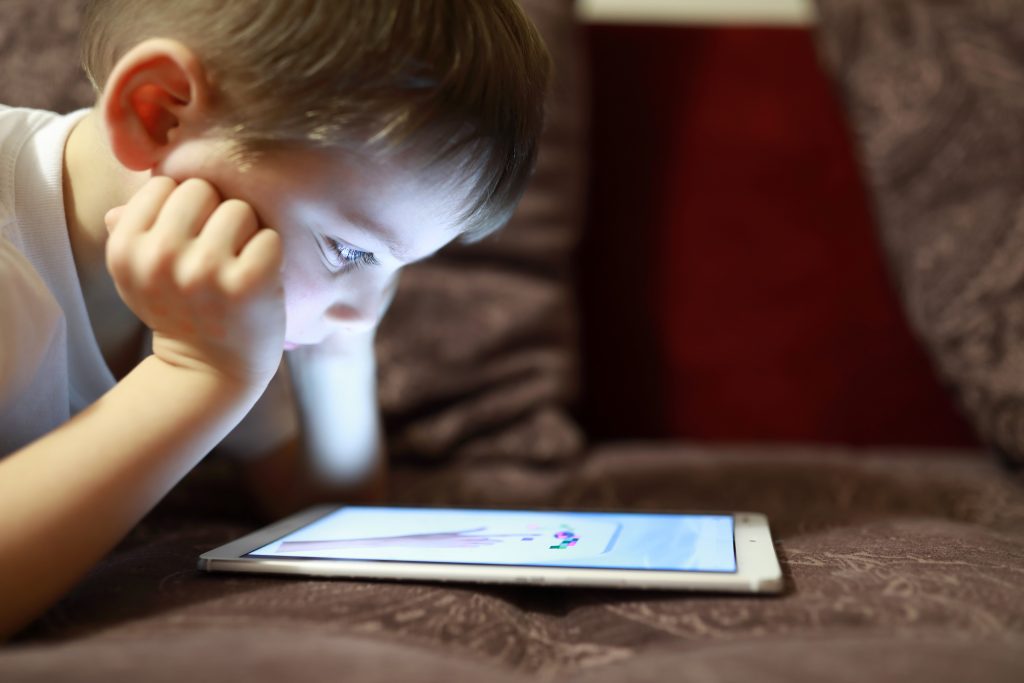In today’s digital era, screens are more than just tools; they’re the way our children learn, socialize, and entertain themselves. Whether it’s through educational apps, YouTube videos, or TikTok trends, screens are woven into the daily lives of children and the newer generation. According to recent studies, children’s screen time has seen a staggering increase, with averages climbing from 4 hours a day in 2020 to over 6 hours in 2024. This trend is even more pronounced during school hours, where digital tools are integral to learning.
But with the rise of screen use comes growing concerns about how it impacts children’s eyes and overall vision health. Prolonged exposure to screens has been linked to eye strain, dry eyes, and even long-term issues like myopia. If you’re a parent of a young child navigating school and screen-based learning, this article is your guide to understanding the risks and learning how to safeguard your child’s vision in a screen-filled world.
The Role of Screen Time in Modern Childhood
It’s undeniable that screens have revolutionized how children access information. Educational platforms use engaging videos and interactive tools to teach everything from math to history, while apps like TikTok provide a creative outlet for self-expression. In fact, over 60% of kids aged 8 to 12 in the U.S. now have access to smartphones, and social media usage is at an all-time high among teenagers.
However, the increased reliance on screens means more time spent focusing on digital devices rather than natural environments. The long hours of close-up work required for screens can lead to digital eye strain, also known as computer vision syndrome, especially for children who are still developing their visual systems. Symptoms like blurred vision, headaches, and difficulty focusing are becoming increasingly common.
The Connection Between Screen Time and Vision Problems
Children’s eyes are not designed to handle prolonged screen use. Extended screen time can:
- Cause Eye Strain: Digital devices force the eyes to work harder to focus, leading to discomfort and fatigue.
- Contribute to Myopia (Nearsightedness): Studies show that excessive screen use and limited outdoor time are contributing factors to the global rise in myopia among children.
- Reduce Blinking Rates: When kids stare at screens, they blink less, which can cause dryness and irritation.
- Disrupt Sleep Patterns: Blue light from screens interferes with melatonin production, affecting sleep quality and overall health.
These issues highlight the importance of balancing screen time with habits that support healthy vision.

Tips to Protect Your Children’s Eyes
Fortunately, there are practical steps you can take to ensure your child’s eyes stay healthy despite increasing screen exposure. Here’s what experts recommend:
1. Follow the 20-20-20 Rule
Encourage your child to take a break every 20 minutes by looking at something 20 feet away for at least 20 seconds. This helps reduce eye strain and allows the eyes to refocus naturally. Make it a fun routine by setting timers or turning it into a game.
2. Optimize Screen Settings
Adjust the brightness, contrast, and text size of screens to create a comfortable viewing experience. Ensure screens are positioned at eye level and about 18-24 inches away from your child’s face. This helps maintain proper posture and reduces unnecessary strain.
3. Encourage Outdoor Play
Spending time outdoors has been shown to reduce the risk of developing myopia. Aim for at least 1-2 hours of outdoor activity daily, where children can focus on distant objects and give their eyes a break from screens.
4. Use Blue Light Filters
Blue light-blocking glasses or screen filters can minimize the impact of blue light on your child’s eyes. Additionally, activating the device’s “night mode” can reduce blue light exposure in the evening.
5. Schedule Regular Eye Exams
Routine eye exams are crucial for detecting early signs of vision problems. A comprehensive exam can identify issues like nearsightedness, astigmatism, or eye alignment concerns. Your optometrist can also recommend strategies tailored to your child’s needs.
6. Limit Screen Time
Set clear boundaries for recreational screen use, especially for younger children. The American Academy of Pediatrics recommends no more than 1 hour of screen time per day for kids aged 2-5 and consistent limits for older children. Create “no-screen” zones during meals and bedtime to encourage healthier habits.
7. Provide a Balanced Diet
Good nutrition supports eye health. Include foods rich in vitamins A, C, and E, as well as omega-3 fatty acids, to promote strong vision. Carrots, leafy greens, fish, and nuts are great additions to your child’s diet.
The Role of Parents in Supporting Eye Health
As parents, you play a critical role in shaping your child’s screen habits and eye health. Lead by example by practicing good screen hygiene yourself and creating a family culture that prioritizes wellness. Collaborate with teachers to ensure that screen time at school is balanced with hands-on activities and outdoor learning opportunities. The World Health Organization recommends that parents be involved in restricting recreational screen time for young children to the following:
- 0-5 years old: as close to 0 hours of screen time a day
- 6-10 years old: up to 2 hours of screen time a day
- 11-13 years old: up to 3 hours of screen time a day
- 14-18 years old: up to 4 hours of screen time a day
The Long-Term Impact of Healthy Screen Habits
By fostering healthy habits early, you’re not just protecting your child’s eyes today—you’re setting the foundation for lifelong vision health. The younger generation relies heavily on screens, but with the right precautions, we can mitigate the risks and empower children to use technology responsibly.
While we cannot say with perfect certainty what the long-term repercussions of extended screen time for children are, it is important that we take all possibilities into consideration and do what we can to reduce the risks of potential vision changes and future eye health issues.
See the World Clearly with Optical Illusions
By taking these steps, you can protect your child’s vision and give them the tools they need to thrive in a screen-driven world. Don’t wait—schedule a comprehensive eye exam today and invest in your family’s eye health for years to come.
At Optical Illusions: An Optometric Practice, we believe that all children deserve to see clearly and have the best in eye health. Our comprehensive exams include screenings for ocular risk, advanced diagnostic instruments, and personalized care plans to keep your eyes healthy. Schedule an eye exam at one of our convenient locations in San Jose, San Mateo, San Ramon, and Juneau.




